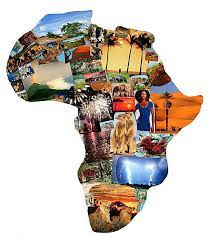Roots and Resilience: The Importance of Safeguarding African Heritage

Updated at: 2023-08-11 21:23:55 (2 years ago by Melkisedeck Leon Shine)
Roots and Resilience: The Importance of Safeguarding African Heritage
As Africans, we are the proud custodians of a rich and diverse cultural heritage that stretches back thousands of years. Our roots run deep, connecting us to our ancestors and shaping our identities. In a world that is constantly changing, it is crucial that we take active steps to safeguard and preserve our African heritage. By doing so, we ensure that future generations can embrace and celebrate their heritage with pride. Here are 15 strategies of preservation that we can employ to protect our culture and heritage:
-
Education and Awareness 📚: We must educate ourselves and others about the importance of African heritage. By raising awareness, we can foster a sense of pride and ownership among Africans.
-
Documentation and Research 📝: It is vital to document and research our cultural practices, traditions, and historical sites. This knowledge will provide a solid foundation for preserving our heritage.
-
Cultural Institutions 🏛️: Investing in the establishment and maintenance of cultural institutions such as museums, libraries, and archives is crucial. These institutions serve as repositories of our history and can educate and inspire future generations.
-
Traditional Knowledge Preservation 📜: We must encourage the passing down of traditional knowledge from older generations to younger ones. This includes traditions, skills, and practices that are unique to our cultures.
-
Cultural Festivals and Celebrations 🎉: By organizing and participating in cultural festivals and celebrations, we keep our traditions alive and vibrant. These events provide opportunities for Africans to come together, share experiences, and celebrate our diversity.
-
Language Preservation 🗣️: Languages are a fundamental part of our culture. By actively preserving and promoting African languages, we ensure that our cultural identities remain intact.
-
Intergenerational Dialogue 👴👦: Engaging in conversations between different generations fosters a deep understanding and appreciation for our heritage. It allows us to learn from our elders and pass on our knowledge to the next generation.
-
Cultural Exchange Programs ✈️: Encouraging cultural exchange programs with other African countries and the world at large promotes a better understanding of our heritage. These programs foster unity and create opportunities for collaboration and learning.
-
Conservation of Historical Sites 🏰: Our historical sites are tangible reminders of our past. By conserving and protecting these sites, we preserve the stories and memories of our ancestors for future generations.
-
Incorporating Heritage in Education 🎓: Including African heritage in formal education curricula ensures that young Africans are exposed to their culture and history. This helps build a strong sense of identity and pride.
-
Digital Preservation 📲: In this digital age, it is essential to utilize technology to preserve our heritage. Digital platforms can be used to archive and share cultural artifacts, stories, and traditions.
-
Support for Traditional Artists 🎨: Traditional artists play a vital role in preserving our heritage through their craft. By supporting and promoting their work, we ensure the continuity of traditional art forms.
-
Community Engagement 🤝: Engaging with local communities is crucial in the preservation of our heritage. By involving community members in decision-making processes and empowering them, we ensure that our heritage is protected and valued.
-
International Collaboration 🌍: Collaborating with other African countries and global organizations enables us to learn from successful preservation strategies implemented elsewhere. It also strengthens our collective voice in advocating for the protection of African heritage.
-
Embracing Unity and African Identity 🌍: Above all, we must remember that our strength lies in our unity. Embracing our African identity and working together towards a common goal will ensure the preservation of our heritage for generations to come.
In the words of Nelson Mandela, "Our rich and varied cultural heritage has a profound power to help build our nation." Let us take pride in our roots, celebrate our resilience, and work together to safeguard our African heritage. By developing our skills and implementing these recommended strategies, we can ensure that the flame of our cultural identity continues to burn brightly.
Now, it's your turn! What steps are you taking to preserve African culture and heritage in your community? Share your stories and ideas with us. Together, let's build a vibrant and united Africa for future generations. #PreserveAfricanHeritage #UnitedAfrica #ProudlyAfrican


